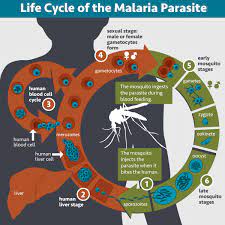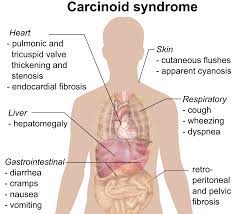INTRODUCTION
Dyspnea, commonly known as shortness of breath, is a distressing symptom characterized by a subjective sensation of breathing discomfort. It is a common symptom experienced by individuals of all ages and can arise from various underlying conditions.
CAUSES OF DYSPNEA:
- Respiratory Conditions: Dyspnea often stems from respiratory disorders such as asthma, chronic obstructive pulmonary disease (COPD), pneumonia, or interstitial lung disease. These conditions impair the normal flow of air in and out of the lungs, leading to breathlessness.
- Cardiac Issues: Heart-related conditions, including congestive heart failure, coronary artery disease, and heart attacks, can cause dyspnea. When the heart fails to pump blood effectively, fluid accumulates in the lungs, resulting in difficulty breathing.
- Anxiety and Panic Disorders: Emotional states like anxiety and panic can induce dyspnea, leading to rapid, shallow breathing and a feeling of breathlessness. The psychological aspect of dyspnea should not be overlooked when considering its potential causes.
- Anemia: A low red blood cell count or decreased hemoglobin levels can impair the oxygen-carrying capacity of the blood, causing dyspnea. Conditions such as iron deficiency anemia and certain blood disorders can contribute to this symptom.
- Other Causes: Dyspnea may also arise from obesity, deconditioning of the muscles involved in breathing, lung cancer, pulmonary embolism, or even certain medications.
SYMPTOMS OF DYSPNEA:
Dyspnea manifests differently depending on its underlying cause and severity. Common symptoms include:
- Shortness of Breath: The primary symptom of dyspnea, characterized by the feeling of inadequate air intake or suffocation.
- Rapid Breathing: Individuals experiencing dyspnea may exhibit rapid, shallow breathing patterns to compensate for their perceived difficulty in breathing.
- Chest Tightness: Some people with dyspnea report a sensation of constriction or tightness in the chest.
- Wheezing: Wheezing, a high-pitched whistling sound produced during breathing, can accompany dyspnea, especially in respiratory conditions such as asthma.
- Fatigue and Weakness: Dyspnea often leads to fatigue and weakness due to the extra effort required to breathe adequately.
TREATMENT:
The treatment of dyspnea depends on its underlying cause. Here are some common approaches:
- Addressing the Underlying Condition: Identifying and treating the primary cause of dyspnea is crucial. For instance, respiratory conditions may require inhalers, bronchodilators, or oxygen therapy, while heart-related causes may necessitate medications, lifestyle changes, or surgical interventions.
- Breathing Techniques: Patients can benefit from learning specific breathing exercises and techniques to manage dyspnea effectively. Techniques like pursed-lip breathing and diaphragmatic breathing can help regulate breathing patterns and reduce breathlessness.
- Physical Therapy: For individuals with dyspnea caused by muscle deconditioning or obesity, physical therapy may be recommended. Exercise programs tailored to improve respiratory muscle strength and overall fitness can alleviate dyspnea symptoms.
- Anxiety Management: Dyspnea triggered by anxiety or panic disorders can be managed through relaxation techniques, counseling, and, in some cases, anti-anxiety medications.
- Supportive Care: Palliative care or hospice services may be necessary for individuals with severe or end-stage dyspnea to provide comfort, symptom management, and emotional support.
FOODS AVOIDED DURING DYSPNEA:
When experiencing dyspnea or shortness of breath, it is important to consider dietary choices that promote easy breathing and avoid foods that may exacerbate symptoms. While specific triggers can vary depending on individual sensitivities, here are some general recommendations on foods to avoid in cases of dyspnea:
- Heavy and Greasy Foods: Fatty and greasy foods can contribute to bloating and make breathing more difficult. Avoid fried foods, fatty cuts of meat, processed foods high in saturated fats, and foods cooked in heavy sauces or gravies.
- Carbonated Drinks: Carbonated beverages, including soda and sparkling water, can lead to bloating and increase pressure in the stomach, potentially affecting breathing comfort. Opt for still water or herbal tea instead.
- Foods High in Sodium: Excessive sodium intake can contribute to fluid retention, which may worsen dyspnea. Limit or avoid processed foods, fast food, canned soups, and salty snacks. Opt for fresh, unprocessed foods and season meals with herbs and spices instead of salt.
- Caffeine and Alcohol: Both caffeine and alcohol can act as diuretics, promoting fluid loss and potentially contributing to dehydration. This can lead to thicker mucus, making breathing more difficult. Limit or avoid coffee, tea, energy drinks, and alcoholic beverages.
- Gas-Producing Foods: Some individuals may find that certain foods can cause bloating or gas, which can increase pressure on the diaphragm and impact breathing. Common culprits include beans, lentils, broccoli, cabbage, onions, garlic, and carbonated drinks. Pay attention to personal triggers and avoid or limit intake accordingly.
- Allergenic Foods: If dyspnea is associated with allergies, it is important to identify and avoid specific allergenic foods. Common culprits include shellfish, nuts, eggs, dairy products, soy, and gluten. Consult with a healthcare professional or allergist to determine specific allergens and make appropriate dietary adjustments.
- Spicy Foods: Spicy foods can cause irritation and inflammation in the respiratory tract for some individuals, potentially worsening dyspnea symptoms. Limit or avoid hot peppers, chili, and spicy sauces if they trigger breathing difficulties.
It is important to note that individual sensitivities can vary, and it may be helpful to maintain a food diary to identify personal triggers. Consulting with a healthcare professional or registered dietitian can provide personalized dietary guidance based on specific health conditions and needs.
CONCLUSION:
Dyspnea is a distressing symptom that can significantly impact an individual’s quality of life. Identifying the underlying cause is crucial for effective management and treatment. Whether it stems from respiratory, cardiac, psychological, or other factors, prompt medical evaluation and appropriate interventions can help alleviate dyspnea and improve the overall well-being of those affected by this symptom.





